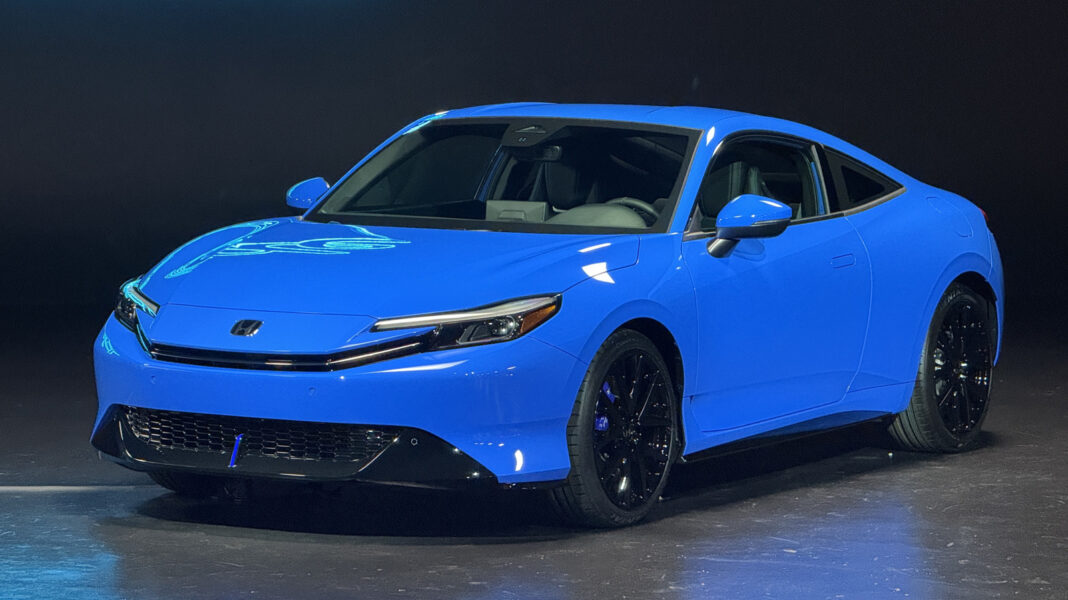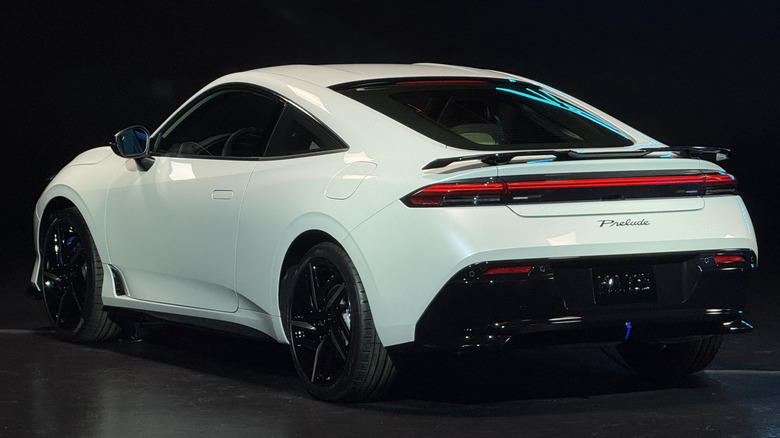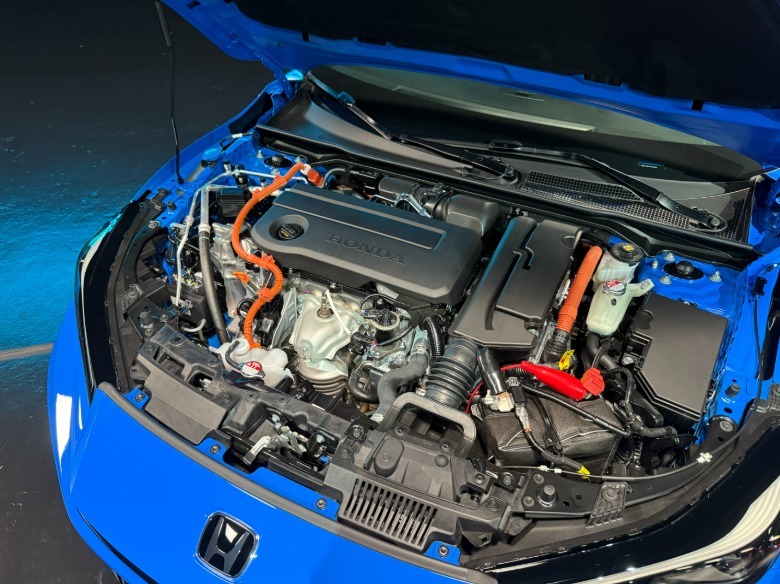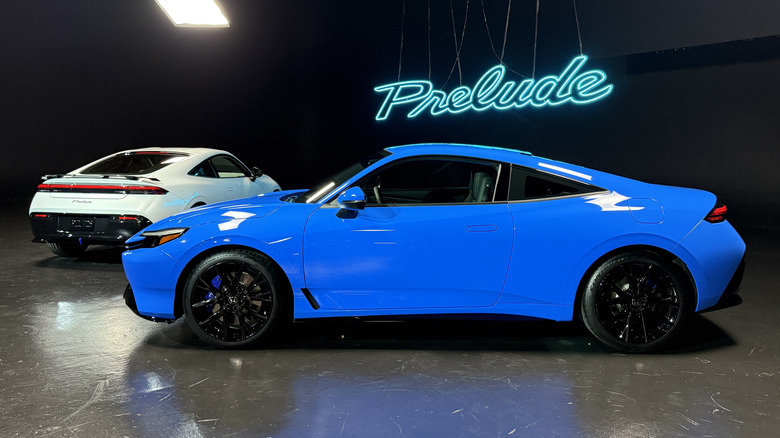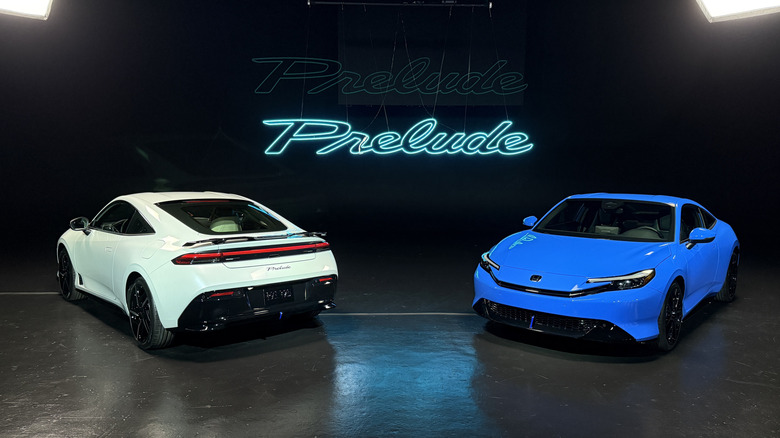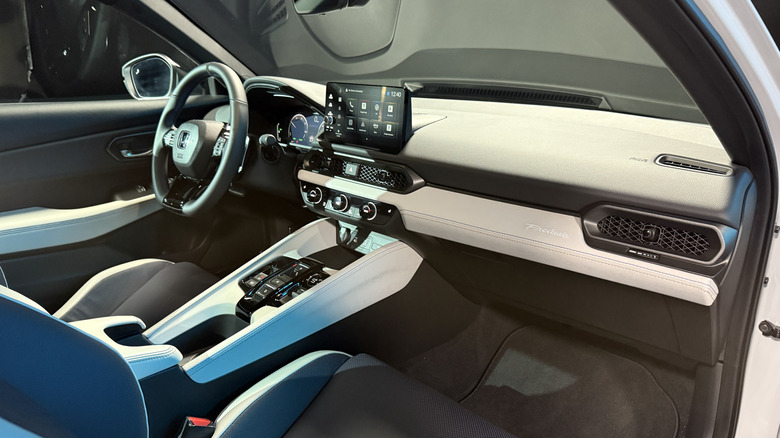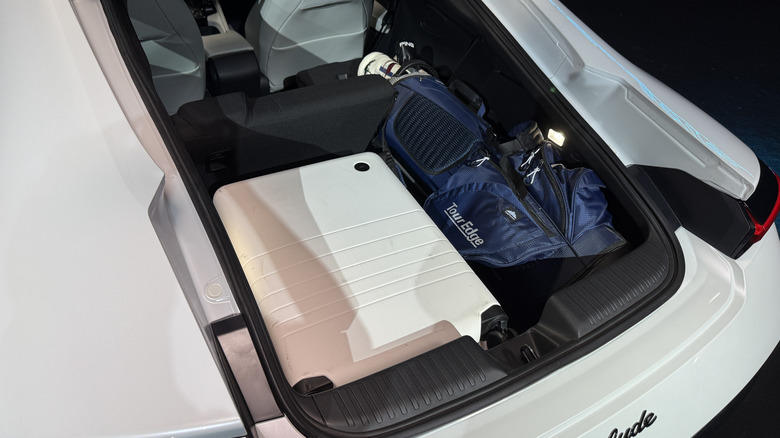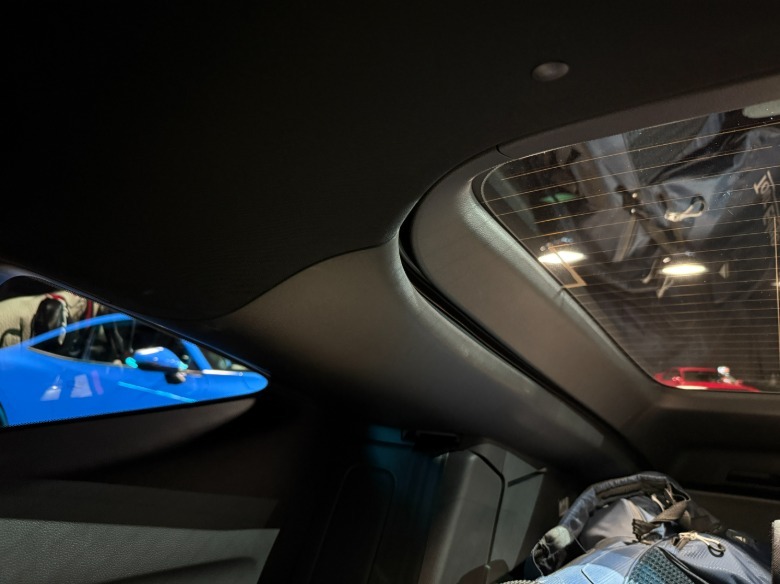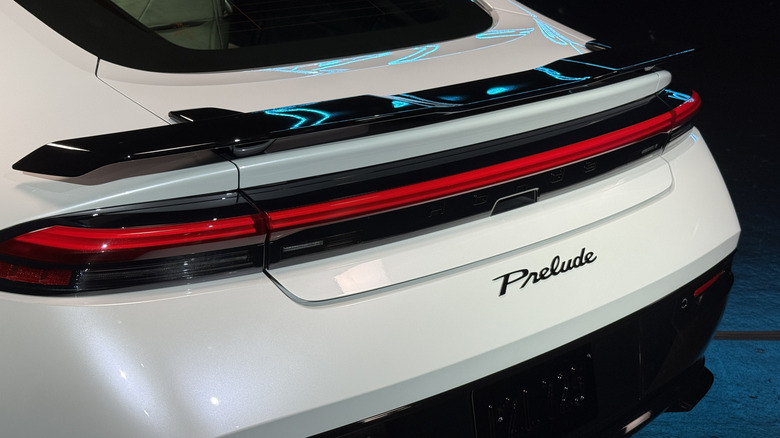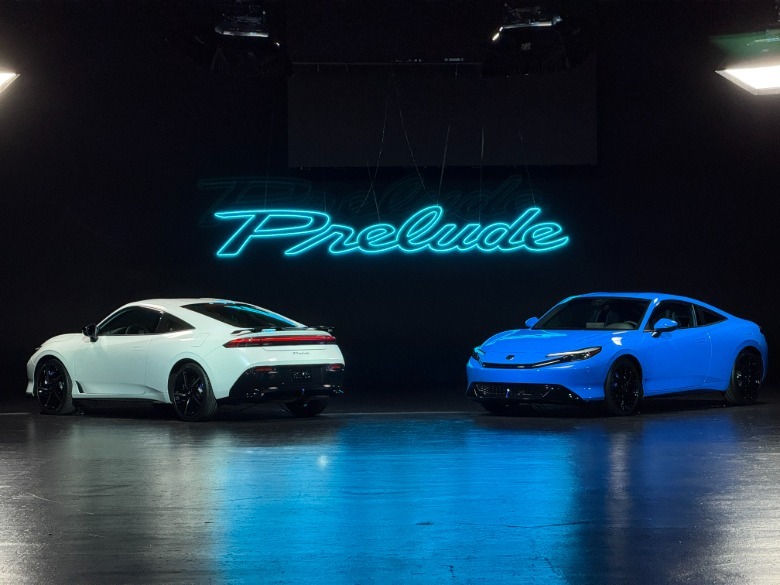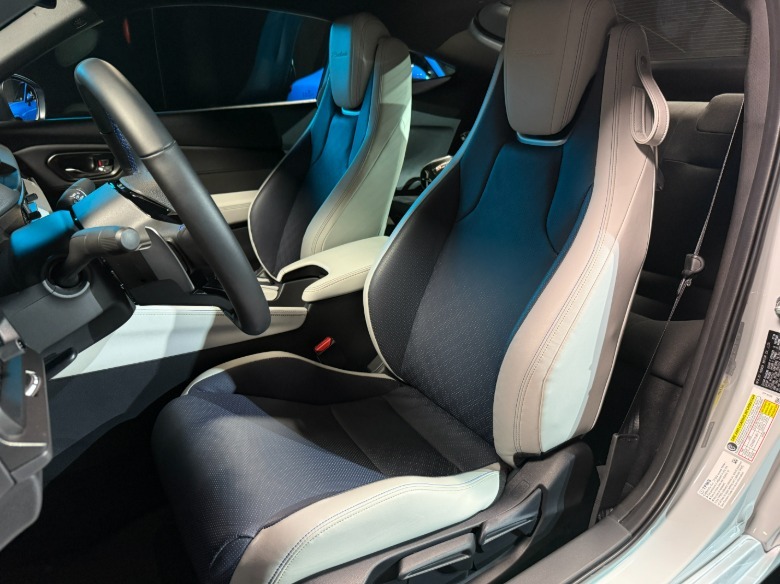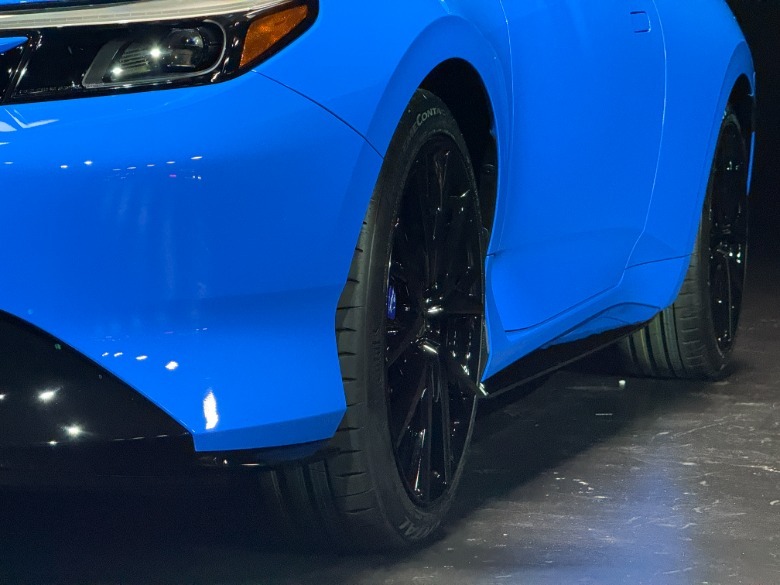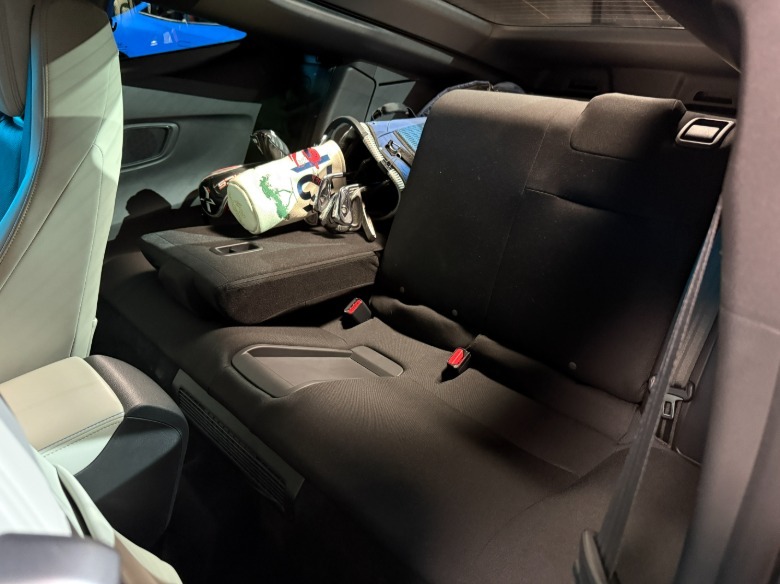Less than two years after showing it in “concept” form, Honda has officially revealed the 2026 Prelude, reviving the nameplate for a new two-door coupe with a hybrid powertrain, a liftback rear end and Civic Type R underpinnings. The design of the production Prelude is exactly what we’ve already seen, both inside and out, and we’ve already known a lot of mechanical details (or at least inferred a lot). Still, despite there not being many surprises to tell you about, I think there’s a lot to get excited by, especially after I got to spend time poking around two 2026 Preludes in a studio alongside examples of the prior five generations of Prelude.
Before you ask: Honda hasn’t released fuel economy estimates for the Prelude yet, and it also isn’t ready to talk about how much it’ll cost. But Honda says the 2026 Prelude will reach dealerships late this fall, so we shouldn’t have to wait long.
It might get 50 mpg
As we expected, the Prelude shares its powertrain with the Civic hybrid. It pairs a naturally aspirated 2.0-liter inline-4 with two electric motors, one a generator motor mated to the engine and the other a traction motor connected to the driveshaft, which can regenerate energy on deceleration. Honda hasn’t said how big the battery pack is, but it’s mounted under the cargo floor. Total output is 200 horsepower and 232 pound-feet of torque sent to the front wheels, exactly the same as in the Civic. No performance specs have been given yet, but Car and Driver got a Civic Sport Touring Hybrid from 0 to 60 mph in 6.2 seconds, which isn’t bad at all, and thanks to stickier tires the Prelude should be even quicker.
The Prelude also uses Honda’s eCVT, but it introduces a new system called S+ Shift that “simulates a real performance transmission experience,” complete with metal paddle shifters that feel very satisfying to click. Activated with a big button on the center console, Honda says S+ Shift delivers quick “shifts” and has traditional transmission functions like blips on downshifts, rev matching and gear holding. Turning it on brings up a tachometer on the gauge cluster and automatically kicks the engine on, but it can be used in any of the drive modes.
Honda also isn’t telling us fuel economy numbers, but it should be about the same as the Civic Hybrid’s — maybe even better, as the Prelude seems much slipperier and has integrated aerodynamic features like a front under spoiler and functional fender vents. The EPA rates the Civic Sport Touring at 48 mpg combined, 50 mpg city and 47 mpg highway, so even if the Prelude ends up being a bit less efficient than that, it’ll still be easily the most efficient sporty car you can buy, especially in terms of two-doors.
Type R bits
The Prelude may share the same platform and powertrain as the Civic, but it gets a bunch of chassis upgrades from the excellent Civic Type R. Its dual-axis strut front suspension and wider front and rear tracks are nabbed from the Type R, and Honda says the Prelude’s steering and standard adaptive dampers have unique tuning for “a sporty yet comfortable grand touring experience with high levels of driver exhilaration and engagement.” The Prelude also has the Type R’s larger, lighter Brembo front brakes, with 13.8-inch rotors and four-piston calipers (plus 12-inch rotors in the back), and like the Civics the Prelude will have selectable regenerative braking.
Every new Prelude comes with 19-inch wheels wearing Goodyear Eagle Touring all-season tires sized 235/40, but high-performance Continental ExtremeContact Sport 02 summer rubber will be a factory option. There are four drive modes — Comfort, GT, Sport and Individual — that Honda says have a wider breadth of capability than in the Civic, adjusting engine sound, powertrain response, steering weight, suspension damping and more. The Prelude is also the first model with the latest Honda Agile Handling Assist that is said to improve handling “through integrated control of the powertrain and braking” that’s adjusted based on steering input.
Sadly not much color choice, but looks great otherwise
I’m sure y’all already have opinions about the Prelude’s styling, as it has remained basically unchanged over the past couple years, but especially after getting to really pore over it in person, I think it looks really great. The more upright windshield but steeply raked roofline and rear glass really works, and despite long front and rear overhangs and basically no dash-to-axle ratio I think the proportions are pretty great. The shark nose front end is well sculpted, and I especially like how the lower corners of the bumper jut out, forming the lines of the lower body along the doors. It’s definitely got a better stance than both the current Civic and the old Civic coupe. The flush door handles luckily aren’t powered but pop out when unlocked, and the antenna is integrated into the rear window instead of using a sharkfin.
There is one thing you need to be prepared to be disappointed about: Color choices. At least at launch, the 2026 Prelude will only be available in five colors, only two of which are actual colors. Boost Blue Pearl looks great, as does Rally Red. Then there’s boring Crystal Black Pearl, Meteorite Gray Metallic and a new color called Winter Frost White, which does look nice and sparkly. A black roof is optional, as are factory accessories like a black rear spoiler and front splitter. And at least every Prelude has bright blue accents in the front grille, rear diffuser and brake calipers.
Not just a Civic cabin
The Prelude is notably more premium inside than a Civic, with its own dashboard design that ditches the dash-spanning air vent look for separate vents and a shelf-like design, plus a taller center console with a push-button shifter and reworked cupholders and storage. The door cards are also a new design with armrests better suited to the Prelude’s driving position. You can get the interior in black or in an excellent white and blue color scheme that really brightens up the cabin, and regardless of your choice there is blue accent stitching throughout. The dashboard and center console have a “synthetic leather” with a cloud texture that looks and feels more high-end than what’s in a Civic, and other touchpoints feel slightly nicer as well.
Specific to the Prelude are heated leather performance seats that have a fantastic houndstooth perforation pattern and integrated headrests with an embossed Prelude script. The driver’s seat has firmer padding and more supportive thigh bolsters than the passenger seat, and they do feel substantially better than what’s in a Civic Si. You also get a thicker-rimmed steering wheel with a flat bottom and a blue 12 o’clock marker, and grippy sport pedals.
Lots of cargo space
While the Prelude’s interior feels excellent for the two front occupants, with a great view out the windshield thanks to thin a-pillars and the shapely hood and front fenders, and seemingly good visibility out the sides and sizable back window, the Prelude’s rear seat isn’t quite as generous. First of all, the back seats are just plain black cloth, which is understandable from a cost-savings perspective, but there’s no fold-down center armrest, cupholders or air vents back there. Honda says there’s 32 inches of rear legroom, and while I was able to get my 5-foot-9 self back there pretty easy without my legs or torso being too cramped, the side of my head rested against the super thick plastic pillar surrounding the hatch. It’s definitely best suited for children, dogs, or very brief trips with your short king friends.
What isn’t too cramped is the cargo area, accessed by the liftback hatch. Even with the rear seats up there’s a good amount of space — you can easily fit larger carry-on suitcases — but fold the 60/40-split rear seatbacks flat and there’s enough room for golf bags. I’m really glad the Prelude doesn’t just have a normal trunk like the Toyota 86 or old Civic coupe.
On sale very soon
Honda is only offering the Prelude in a single fully-loaded trim level, which I think is a smart move, though I’m sure many of you will complain that there isn’t a stripper model. Every new Prelude has a 10.2-inch digital gauge cluster and a 9-inch central touchscreen with wireless Apple CarPlay and Android Auto, and the latest Google Built-In capability. There are USB-C ports and a wireless charger, an 8-speaker Bose Centerpoint sound system with a subwoofer in the cargo area, and a WiFi hotspot. Other standard features include the full Honda Sensing suite of driver-assist technologies like automated emergency braking and a new post-collision braking system, adaptive cruise control with lane-keeping assist and traffic jam assist, lane-departure warning, blind-spot monitoring, rear cross-traffic alert and traffic sign recognition.
The company says the 2026 Prelude will reach Honda dealers nationwide in late fall. A 2026 Civic Sport Touring Hybrid Hatchback will set you back $34,690, and given the Prelude’s extra standard features and Type R bits I’m guessing it’ll be knocking right on $40,000’s door, if not a bit more — the Prelude will be built at Honda’s Sayama plant in Japan, so it could be affected by tariffs. Before you get all upset over potential sticker shock, in 1999 a Prelude Type SH cost just over $26,365, which would be more than $50,000 in today’s dollars. The Prelude was always a more premium offering from Honda that featured new technologies, so I think the new one fits right in, and as an affordable hybrid coupe it’ll be in a class of its own in the U.S. market.
